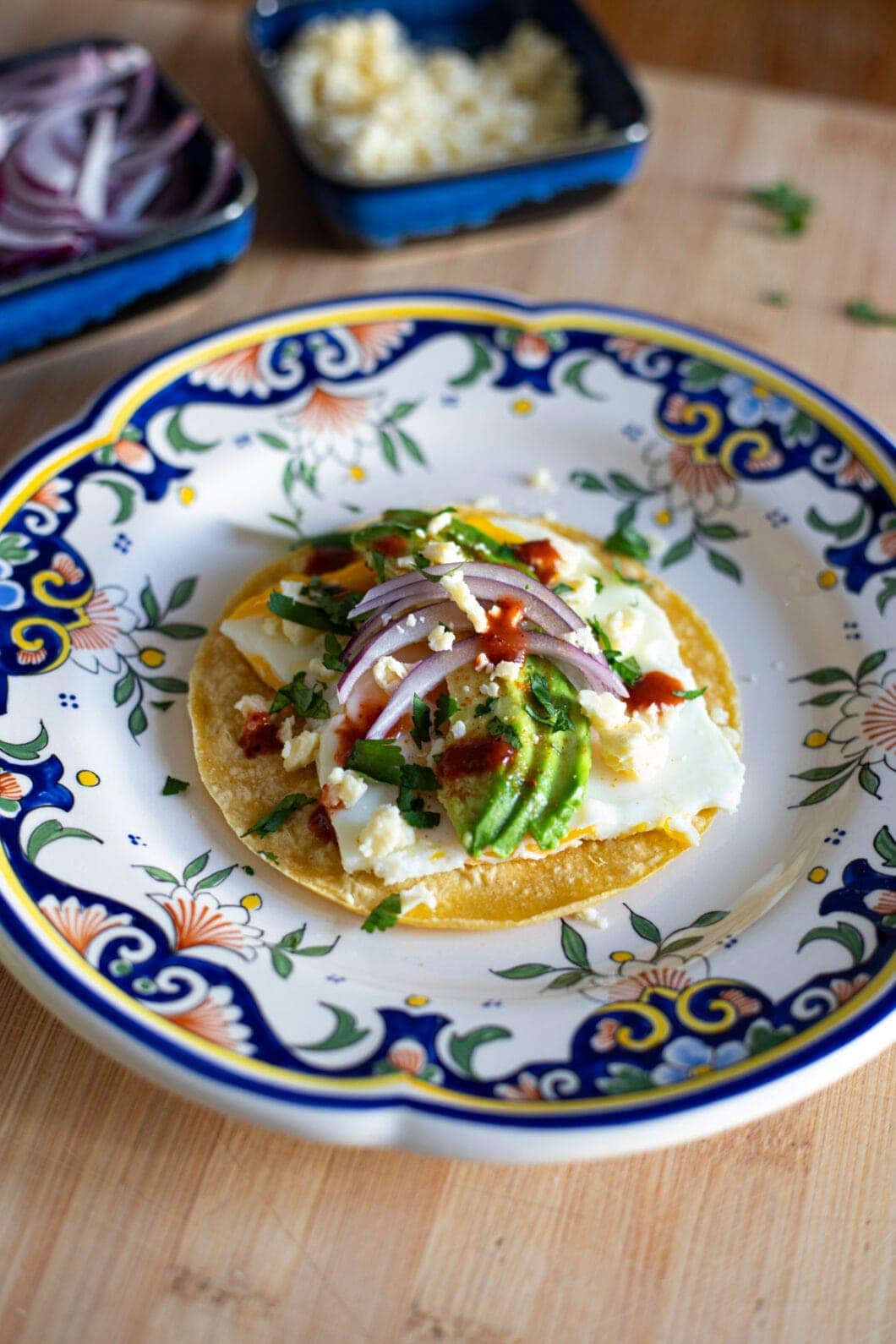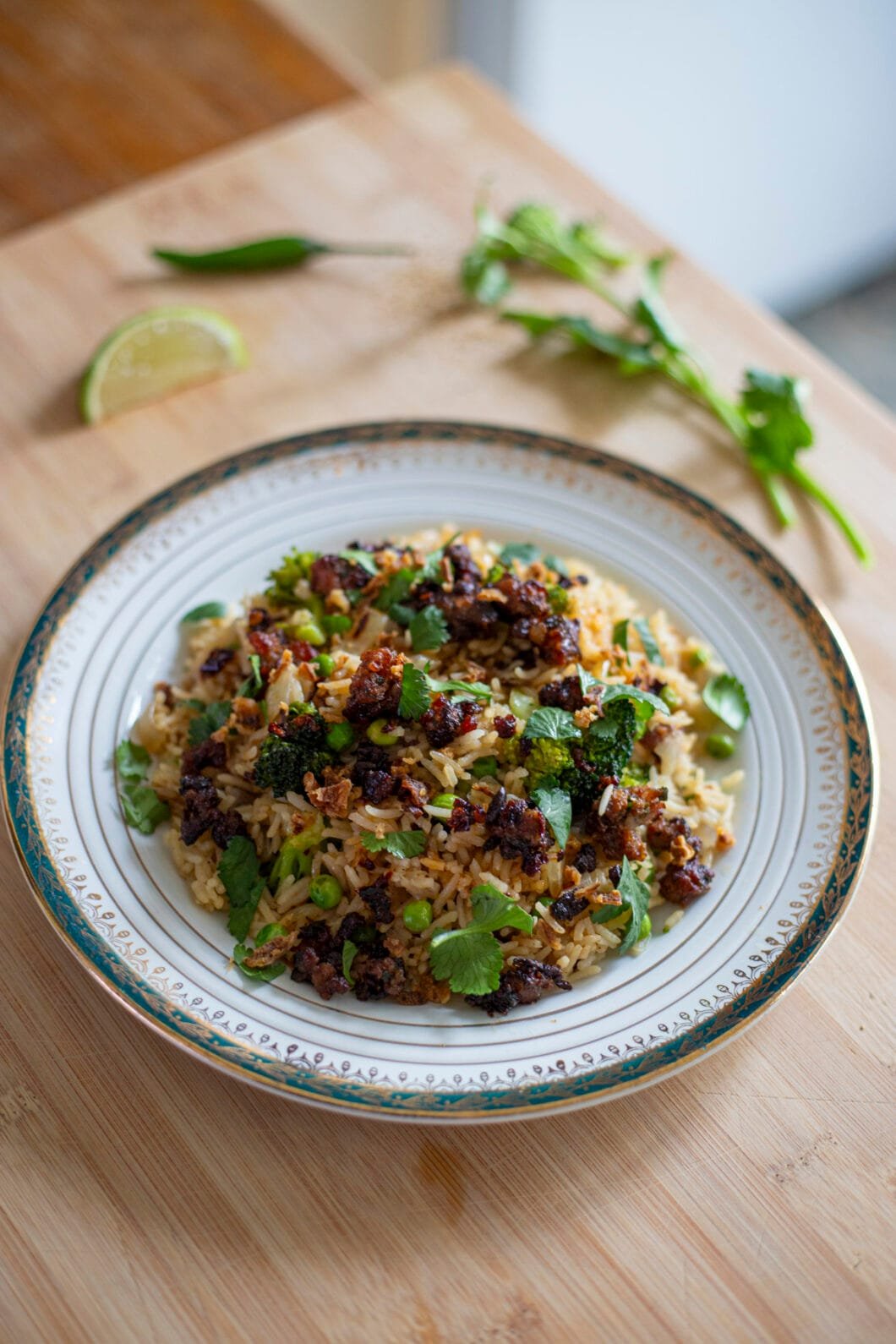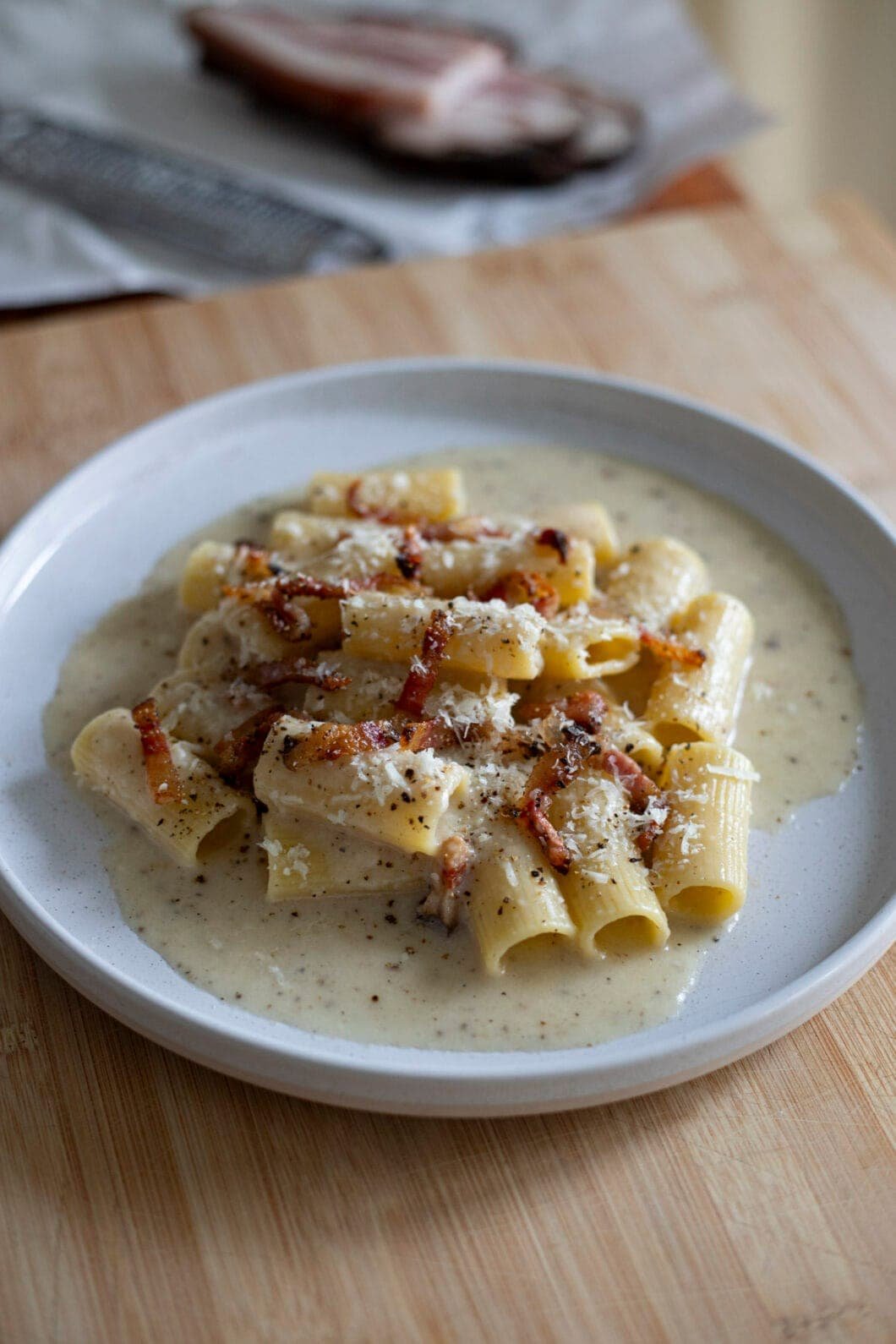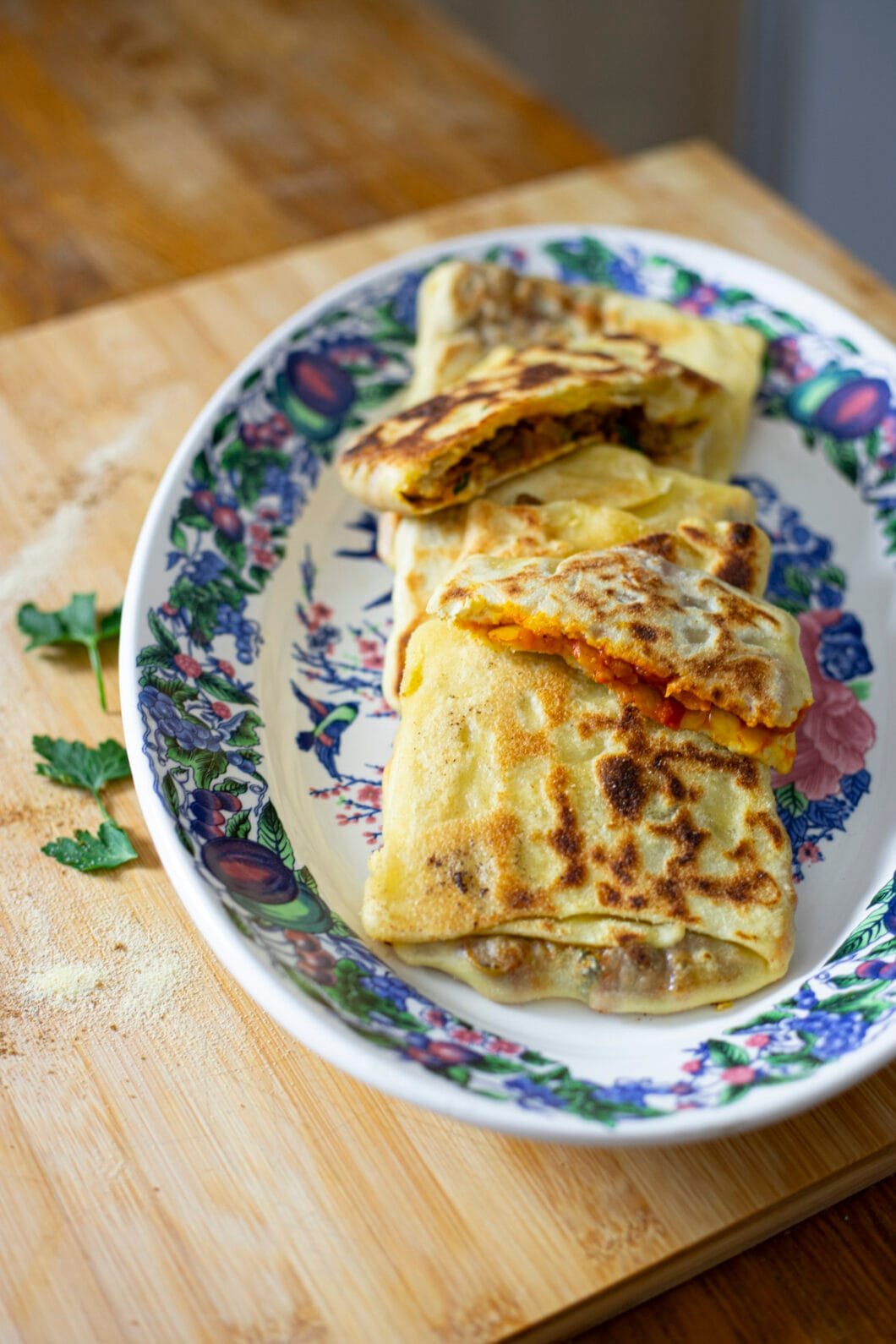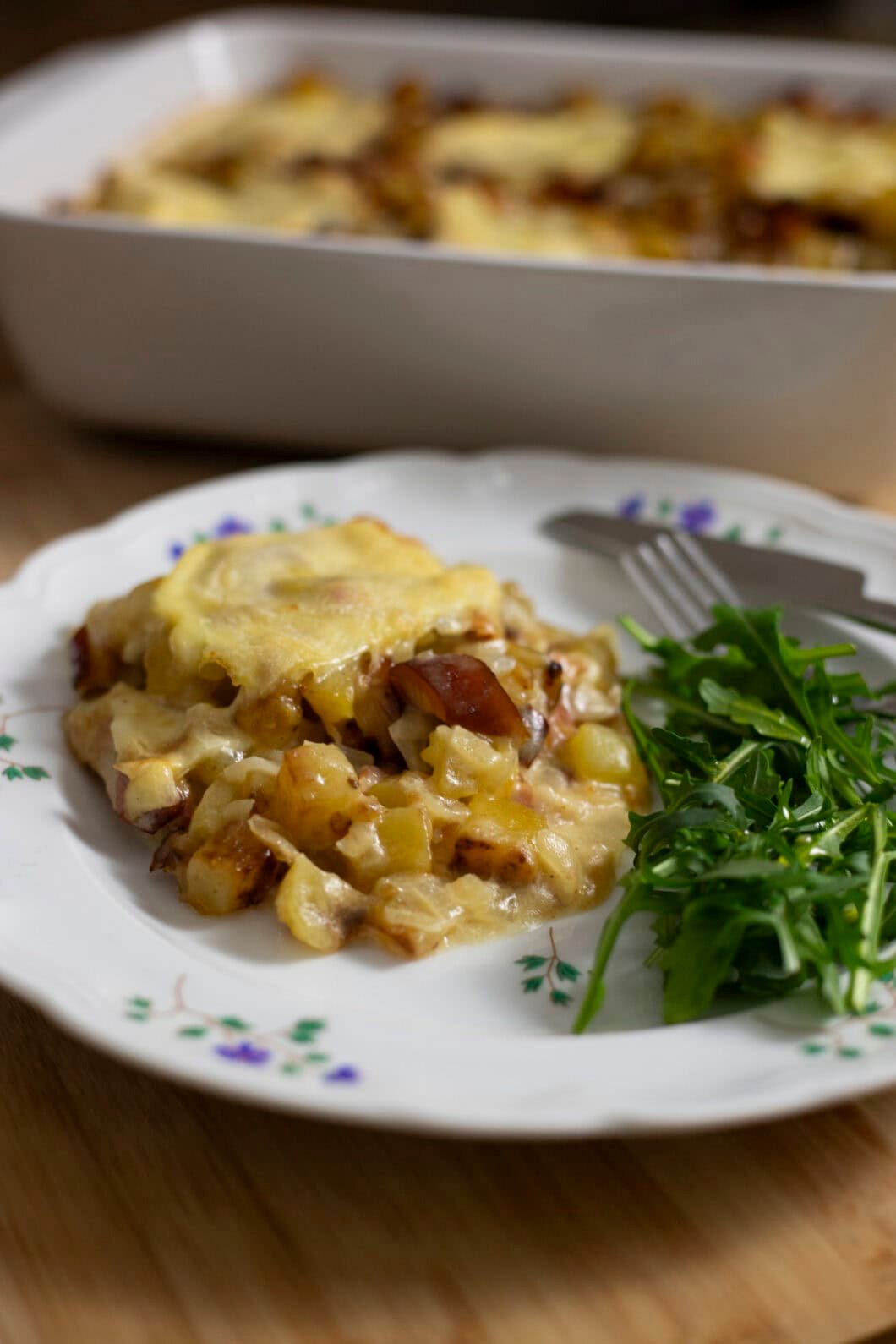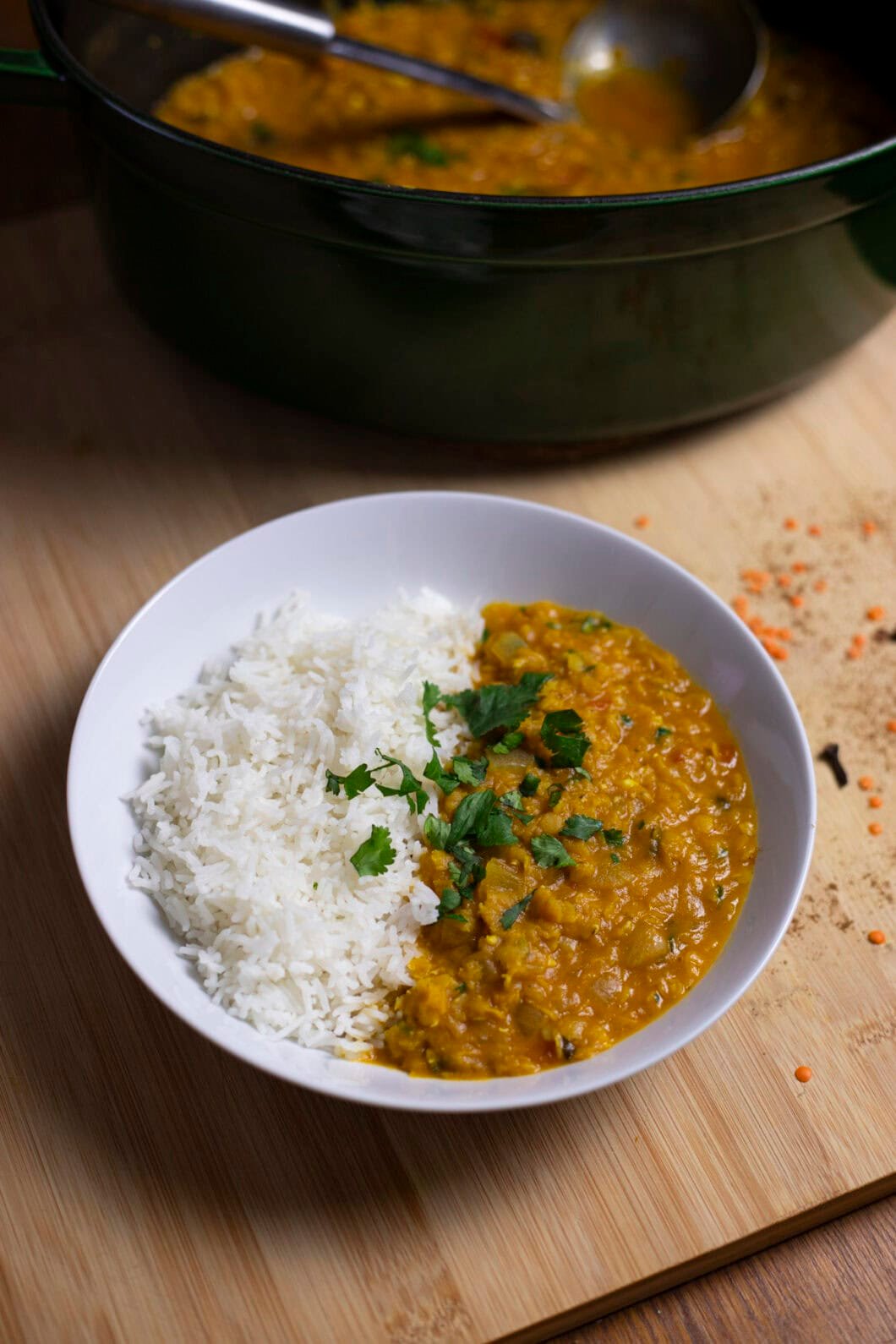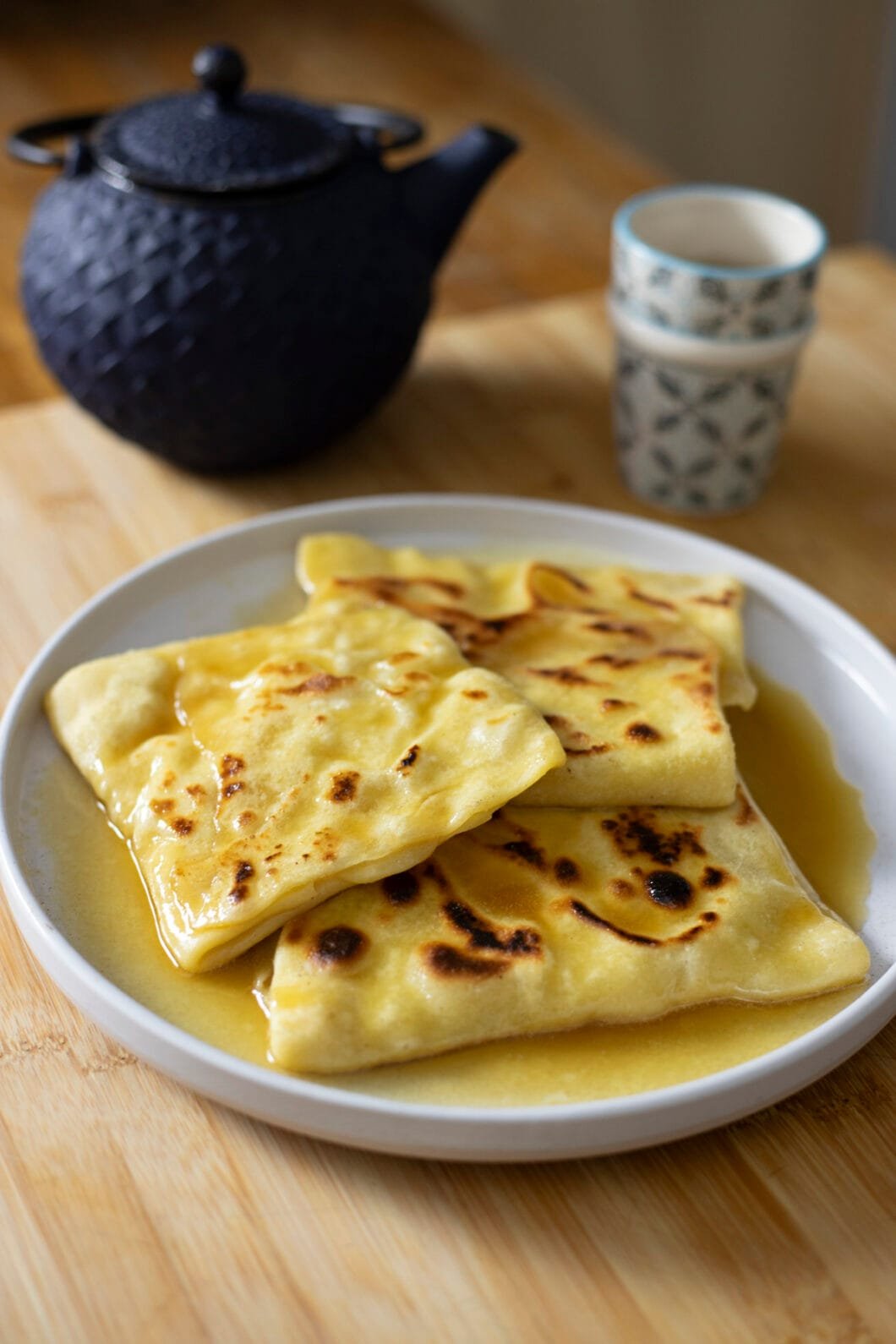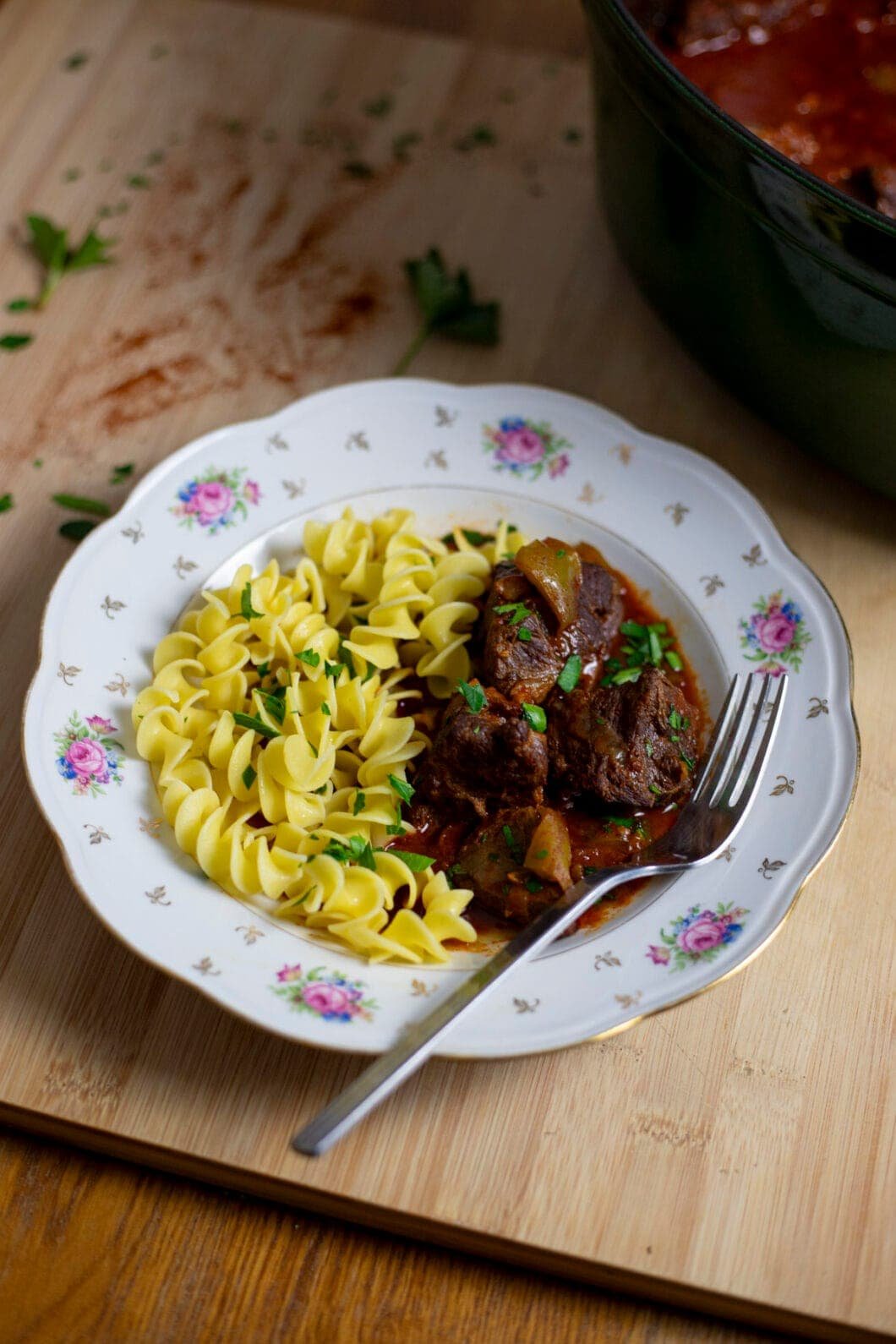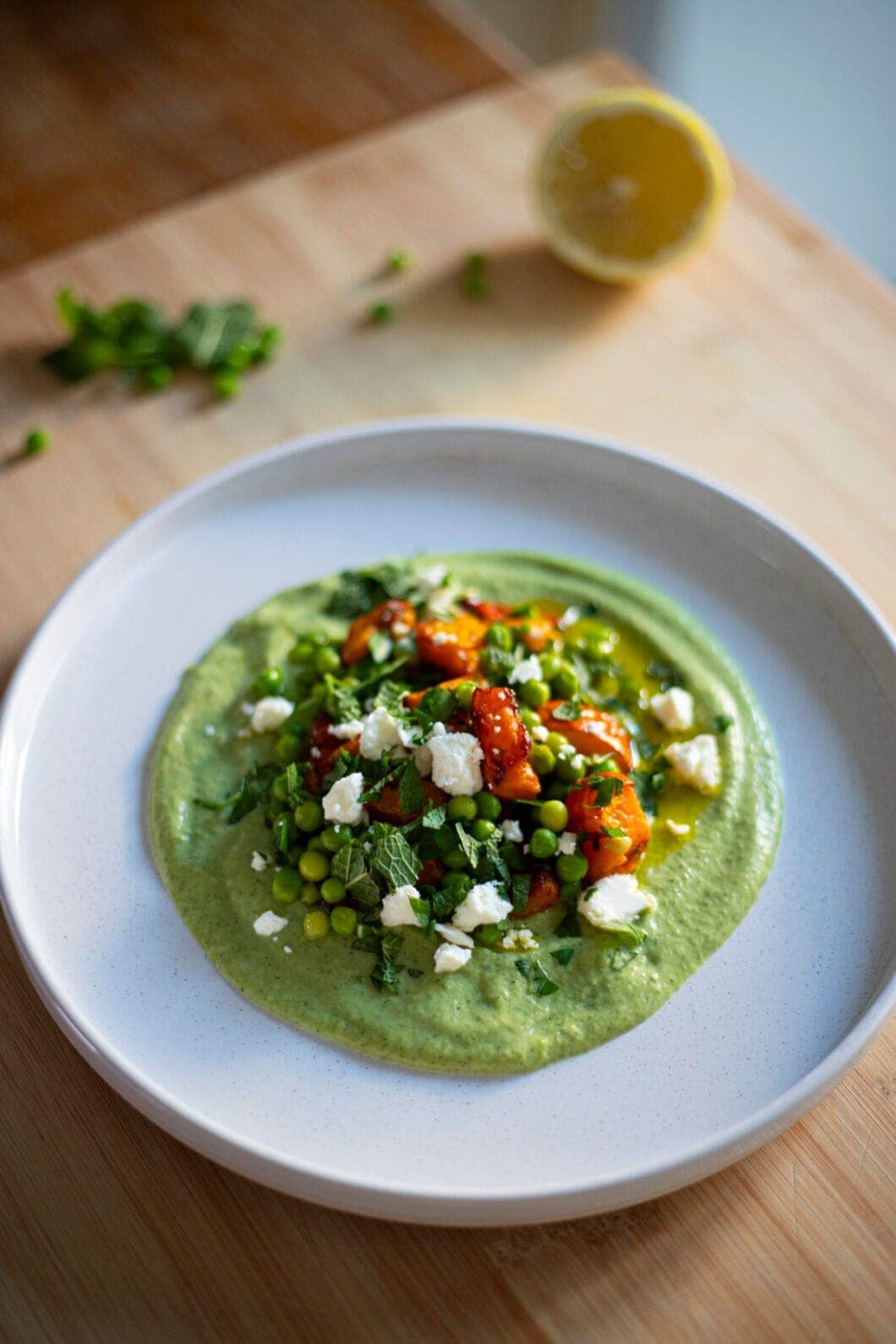This is a brunch classic : egg & avocado, the well-known and beloved match.
Does egg & avocado tacos sound like an umpteenth variation on the classic avocado toast ? Pretty much. Does it taste anything like the Western version ? Not in the least.
These tacos have a very distinct Mexican taste to them. Actually, it’s quite surprising to see how Mexican it can get when you know how short the ingredients list is.
It all relies on the condiments and toppings used, as well as the taco itself : take :
- true Mexican corn tortillas,
- a good Mexican hot sauce -I highly recommend this one, if you can handle it,
- plenty of cilantro,
- cotija cheese (replace with feta cheese),
- red onions,
- lime,
and this, my friends, is how you build a very flavourful taco.
I’m not saying these tacos are authentically Mexican, mind you. This is a Westernized, vegetarian variation on tacos : but you will travel with these, and your tastebuds will be dancing the bachata in the sun.
The 20 minutes mark –actual 20 minutes, not food bloggers’ 20 minutes- relies on oven-cooking the eggs :
- this oven-cooking process barely takes 4 minutes ; no more.
- as soon as you pop them in the oven, all you have to do is chop avocadoes, red onion & cilantro ;
- then, you heat up your tacos, and you’re already done !
Assemble yourself or let your guests do it ; it’ll save up on assembly time and allow for each one to customize it to their taste preferences.
Egg & avocado tacos – Recipe
Ingredients – Advice & key points
- For the corn tacos, hot sauce and cotija cheese, you might need to visit a Mexican store.
- If you’re in France or in Spain, you can order from La Esquinita. They also have a physical shop in Paris I go to. They don’t always have cotija cheese, though ; when I can’t find it, I just replace it with feta cheese.
- Use a hot sauce that you’re comfortable with to enjoy these tacos -not one you can only put two drops of, or your tacos might be too dry. If you feel wary, you might replace half the gochujang with ketchup.
Ingredients & cooking – A few specifics
- For the tacos : I recommend
- using corn tacos, which are more traditional are flavorful than their wheat counterpart, and ;
- heating them in a hot pan, rather than microwaving them.
- Avocadoes : Use avocadoes that are ripe enough, or the tacos will be disappointing !
- When in summer, feel free to make an actual pico de gallo by adding minced tomatoes to your chopped onion and cilantro.
Now let’s taco !
If you want more vegetarian tacos recipes, you can also check my Express gochujang mushroom tacos.


